When it comes to cooling, a coolant is an important material used to regulate the temperature of an entire system. It helps protect against rust and corrosion while being gentle on rubber hoses and plastic materials. Discolored rusty coolant typically indicates rust in the cooling system. This article will explore what causes this rust in the coolant and how to get rid of it. Rust can be created inside of the coolant when air gets into the radiator if inappropriate coolants are used. Solutions for removing this rust will also be discussed in this article, so readers should continue reading for more information.
What Is The Coolant?
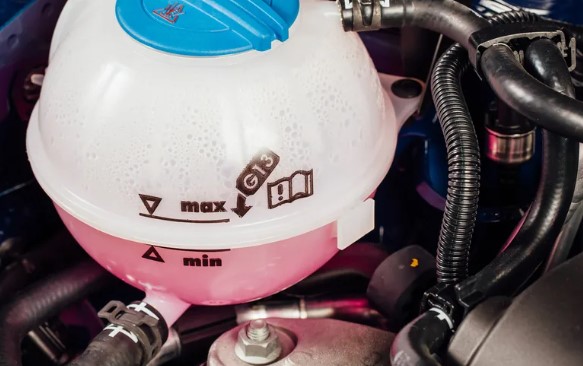
Coolant is an essential liquid that helps to keep engines running at their optimal operating temperature. Coolant, which also goes by the name of antifreeze, prevents the engine from freezing in cold temperatures and protects its components from corrosion. It is made up of ethylene glycol or propylene, water, and a few protective chemicals and can be found in colors such as green, blue, or pink. The coolant plays an important role in ensuring that heat balance within the engine is maintained while dissipating excess heat generated during use. It has a variety of uses including automotive applications where it serves to maintain consistent performance over time without compromising on safety standards.
How Does Coolant Work?
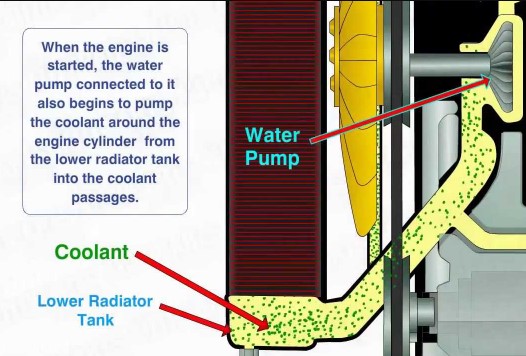
The car’s engine must remain cool while in use to avoid damage. This is done through the car’s cooling system, which works by transferring heat from the engine to a liquid coolant that passes through tubes in the engine block and heads. The hot fluid then travels via a rubber pipe up to the radiator at the front of the vehicle, where it is cooled by air entering from its grill. After cooling, this fluid returns back to the engine where it absorbs further heat before starting again on its cycle. In order for this cycle to continue uninterrupted, a water pump must be installed so that water can keep circulating throughout these pipes and tubes.
What Causes of Rust in Coolant?
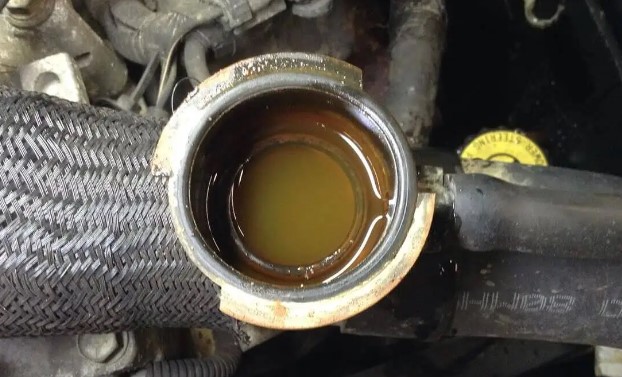
Antifreeze is essential in order to keep the radiator and the entire cooling system from becoming rusty. Over time, as antifreeze begins to break down, it can no longer effectively lubricate parts of the system. This causes mineral deposits within the radiator that slow down liquid flow and create rust inside. It is important to regularly inspect your car’s cooling system and replace old antifreeze with fresh new fluid in order to ensure a healthy functioning of your vehicle’s cooling system.
There are several causes of rusty coolant:
- Failure to use the appropriate coolant in an automobile can lead to expensive repairs. If water is poured into the radiator, it can corrode the metal moving elements of the system and impede coolant flow through the engine block from the radiator, resulting in costly damage to parts such as impellers and water pumps. It is important to ensure that your car has been filled with the right kind of coolant and antifreeze, as neglecting this step could be very costly.
- A radiator with air inside can cause engine cooling problems and damage. As the coolant shrinks due to cooling, the possibility of an air pocket forming increases. This can result in corrosion and water pump seal and bearing wear if not addressed properly. Without an overflow tank, coolant will condense allowing air to enter through the radiator cap, causing overheating when the temperature drops. It is important that this issue is dealt with quickly in order to avoid further damage or costly repairs.
What are the Ways to Get Rid of Rust in Coolant?
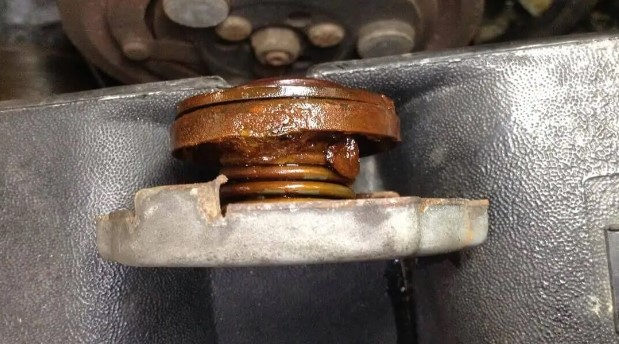
Rust and deposits can be removed from the radiator using radiator cleaning. You can remove rust from the engine by following the steps below:
- Park your car on a flat, even surface and switch off the engine, allowing it to cool down.
- Loosen the radiator cap by pushing in and turning it one-half turn, then pull it right off.
- Submerge the radiator petcock in a bucket and open the drain valve by turning the petcock half a turn to let old fluid completely drain out of the container.
- Tie up the radiator overflow container hose with a screwdriver and loosen from clamp using counterclockwise turn of screw before allowing old fluid to fully drain out.
- Close bottom petcock, pour radiator cleaner into fill neck from top of bottle then add more water as per instructions on box before starting engine and letting idle as instructed on packaging .
- Once cooled down , use same procedure to remove cleaner from vehicle followed by filling radiator from top with 50/50 antifreeze solution then idling car for few minutes .
- Burp system removing air bubbles squeezing both top & bottom hoses until no bubbles seen at neck & volume remains constant
- Fill overflow tank “hot” mark with 50/50 Antifreeze solution followed by applying anti-corrosion agent onto neck 9 Add antifreeze if level decreases until amount at bottom is constant.

Why Coolant Is Important?
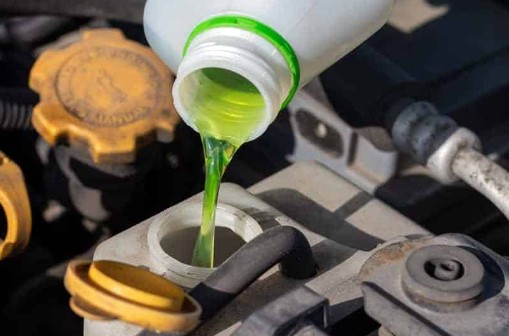
The internal combustion process of a motor produces an immense amount of heat, and without coolant, the engine would be quickly damaged. At temperatures higher than its boiling point, water from the system will begin to evaporate. In colder climates, on the other hand, water inside the car’s cooling system can freeze and become ineffective as well. Coolant is essential in these situations since it allows for optimal performance under both hot and cold conditions all year round. Moreover, certain ingredients are included in a coolant formulation which helps protect against corrosion as well.
What Are The Best Coolants Available?
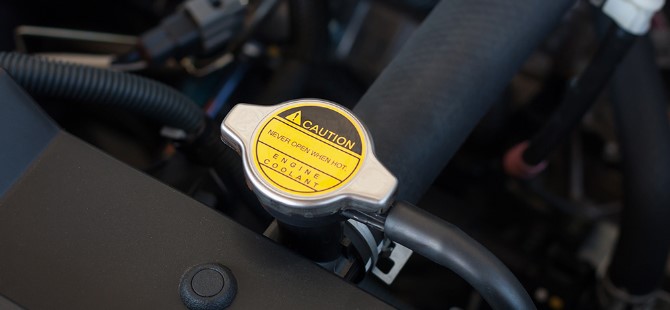
When it comes to engine maintenance, the importance of coolant cannot be stressed enough. It is essential for keeping an automobile running smoothly and extending its life span. For those looking for a reliable coolant solution, the following are some of the most popular options:
- EVANS Cooling Systems High Performance Waterless Engine Coolant
- ProLine Extended Life Antifreeze/Coolant Full Strength
- Zerex G-05 Antifreeze/Coolant
- Recochem OEM Pink Premium Antifreeze Concentrate
- Valvoline MaxLife Universal Antifreeze/Coolant
- Star Brite Star-Cool Premium Synthetic Engine Coolant
Coolant is a water-based liquid that is required in order to keep an engine cool. Although it does work to prevent rust from forming, the coolant will inevitably rust itself over time. Fortunately, this rust can be easily removed with minimal effort and inconvenience.

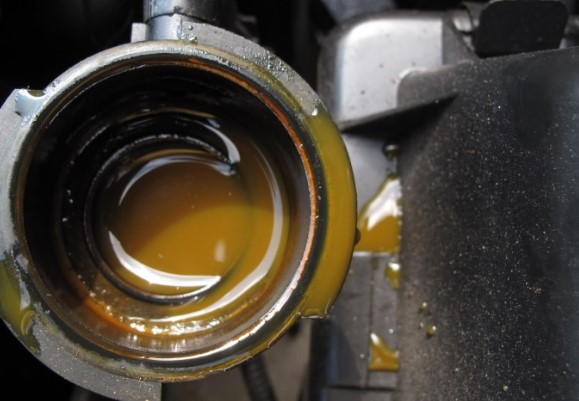
I’ve been dealing with rusty coolant for a while now and it’s been a huge headache. I was always replacing the coolant to get rid of the rust, but it was a huge hassle and a waste of money. After some research, I found out that the real solution is a radiator cleaning. It’s a simple process that only takes a few steps and it’s been an effective way to get rid of the rust in my coolant. I’m glad I found this article because it helped me understand the problem and the solution better. I would recommend everyone to check their coolant regularly and use the radiator cleaning method if you find rusty coolant. It’s an effective and affordable solution.